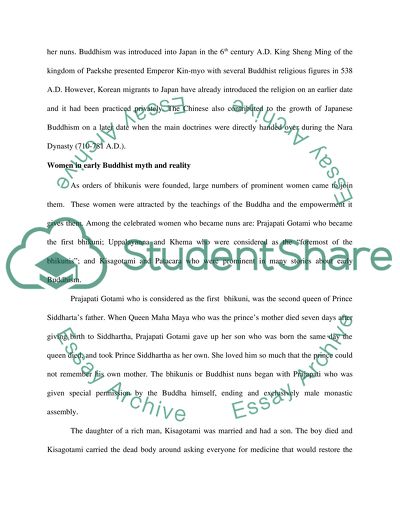Cite this document
(“Japanese and Chinese Buddhist Nuns Essay Example | Topics and Well Written Essays - 2500 words”, n.d.)
Japanese and Chinese Buddhist Nuns Essay Example | Topics and Well Written Essays - 2500 words. Retrieved from https://studentshare.org/miscellaneous/1530594-japanese-and-chinese-buddhist-nuns
Japanese and Chinese Buddhist Nuns Essay Example | Topics and Well Written Essays - 2500 words. Retrieved from https://studentshare.org/miscellaneous/1530594-japanese-and-chinese-buddhist-nuns
(Japanese and Chinese Buddhist Nuns Essay Example | Topics and Well Written Essays - 2500 Words)
Japanese and Chinese Buddhist Nuns Essay Example | Topics and Well Written Essays - 2500 Words. https://studentshare.org/miscellaneous/1530594-japanese-and-chinese-buddhist-nuns.
Japanese and Chinese Buddhist Nuns Essay Example | Topics and Well Written Essays - 2500 Words. https://studentshare.org/miscellaneous/1530594-japanese-and-chinese-buddhist-nuns.
“Japanese and Chinese Buddhist Nuns Essay Example | Topics and Well Written Essays - 2500 Words”, n.d. https://studentshare.org/miscellaneous/1530594-japanese-and-chinese-buddhist-nuns.


